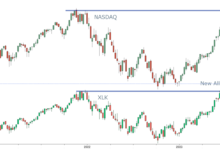Time to Talk 6-7 Year Market Business Cycles
US2000
-0.06%
Add to/Remove from Watchlist
Add to Watchlist
Add Position
Position added successfully to:
Please name your holdings portfolio
Type:
BUY
SELL
Date:
Amount:
Price
Point Value:
Leverage:
1:1
1:10
1:25
1:50
1:100
1:200
1:400
1:500
1:1000
Commission:
Create New Watchlist
Create
Create a new holdings portfolio
Add
Create
+ Add another position
Close
QQQ
-0.29%
Add to/Remove from Watchlist
Add to Watchlist
Add Position
Position added successfully to:
Please name your holdings portfolio
Type:
BUY
SELL
Date:
Amount:
Price
Point Value:
Leverage:
1:1
1:10
1:25
1:50
1:100
1:200
1:400
1:500
1:1000
Commission:
Create New Watchlist
Create
Create a new holdings portfolio
Add
Create
+ Add another position
Close
IWM
+0.08%
Add to/Remove from Watchlist
Add to Watchlist
Add Position
Position added successfully to:
Please name your holdings portfolio
Type:
BUY
SELL
Date:
Amount:
Price
Point Value:
Leverage:
1:1
1:10
1:25
1:50
1:100
1:200
1:400
1:500
1:1000
Commission:
Create New Watchlist
Create
Create a new holdings portfolio
Add
Create
+ Add another position
Close
XRT
-1.55%
Add to/Remove from Watchlist
Add to Watchlist
Add Position
Position added successfully to:
Please name your holdings portfolio
Type:
BUY
SELL
Date:
Amount:
Price
Point Value:
Leverage:
1:1
1:10
1:25
1:50
1:100
1:200
1:400
1:500
1:1000
Commission:
Create New Watchlist
Create
Create a new holdings portfolio
Add
Create
+ Add another position
Close
We began the year examining the 23-month moving averages in all the indices and major market sectors.
It was pretty simple really.
Buy anything that cleared the blue line (2-year business cycle), which we explained was a good reflection of a cycle within a cycle (6-7-year cycles are typical). After all, after an unusual 2020-2022, from 2022-2024 we thought that any index or sector that broke out was showing signs of an intermediate expansion.
And any index or sector that could not clear the blue line, was not only a warning about how long an expansion could last but also an indication of inherent problems in the economy and market. IWM-Monthly Chart
IWM-Monthly Chart
The Russell 2000 (IWM) spent one month (July) above the 23-month MA. Then, after a calendar range reset, we warned about “Sell in July and Go Away” once IWM entered August and could not hold those gains.
Now, along with Retail XRT, both IWM and XRT-Granddad and Grandma of the Economic Modern Family have a new story to tell.
The 80-month moving average (green line) is a longer-term business cycle or about 6-7 years. Besides the blip during COVID, IWM has not BROKE that 80-month MA since 2010.
We can surmise that should IWM fail to hold this MA by the end of October, darker times are coming. We have time but be on the alert.
From 2010 to 2020, IWM was in good shape — although underperforming the QQQ —, which told us the economy was hanging in there and dips could be bought.
For 2 months IWM closed below the 80-month MA in 2020 (Covid), then came right back above it by May 2020.
Until today.
XRT sits right above the 80-month but remember, it never cleared the 23-month. So, if our Grandparents struggle, could other areas hold up? Sure. However, it does tend to stress everyone out.
Buying the dip?
Have more patience.
ETF Summary
- S&P 500 (SPY) There are multiple timeframe support levels round 420-415
- Russell 2000 (IWM) 170 huge
- Dow (DIA) 334 pivotal
- Nasdaq (QQQ) 330 possible if can’t get back above 365
- Regional banks (KRE) 39.80 the July calendar range low
- Semiconductors (SMH) 133 the 200 DMA with 147 pivotal resistance
- Transportation (IYT) 237 resistance 225 support
- Biotechnology (IBB) 120-125 range
- Retail (XRT) 57 key support if can climb over 63, get bullish








